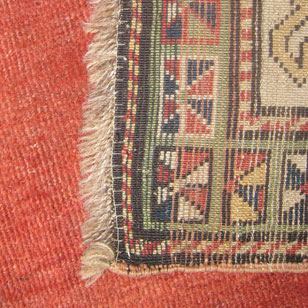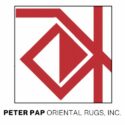Rug Restoration Guide
Many rugs show the effects of use and wear over time. The following are examples of some of the more common types of restoration.
Foundation Wear
These pictures show wear to the foundation of the rug. Some people choose to color in the white threads to disguise the wear. If you suspect this might have been done; take a wet, white cloth and rub the worn area to see if color comes up.
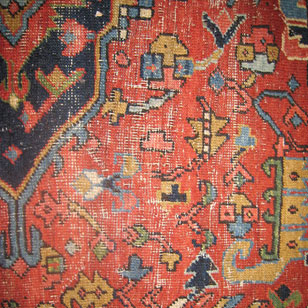
Foundation Wear
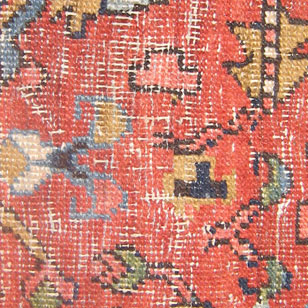
Close Up of Foundation Wear
Reweaving
The plain ivory border on the end, which had been missing, has been masterfully rewoven. Note in the photo of the back how well the weave is matched, and on the front, the quality of the color and surface.
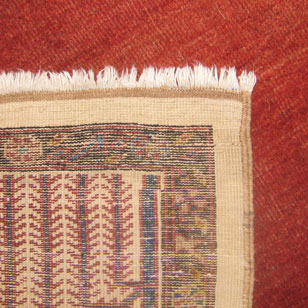
Reweaving - Back
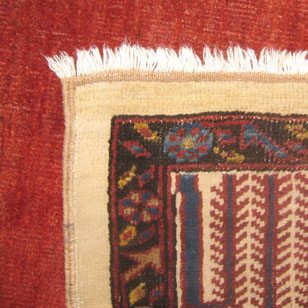
Reweaving - Front
Reweaving with faded dye
You can have an antique rug that has a well-done restoration. Over time, the dyes in the wool that were used faded, resulting in what you see here. We discourage tinting the area as it won’t last. One either has to live with it or have it redone.
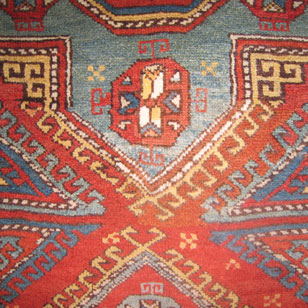
Reweaving with Faded Dye
Edge Damage
This photo shows the edge of a rug, often referred to as “selvedge,” that is in need of repair. Because this damage has been allowed to creep into the body of the rug, the repair will be more involved than a simple rewrapping of the selvedge.
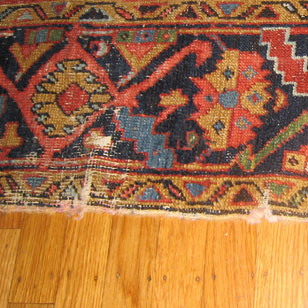
Edge Damage
End Loss
When a rug is allowed to begin to unravel at the end, it results in a look like this. A simple overcasting with a buttonhole stitch or whip stitch can correct this and prevent further unraveling.
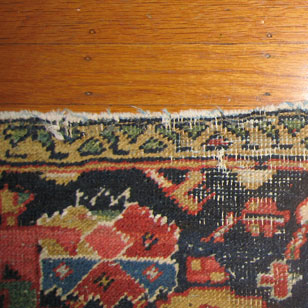
End Loss
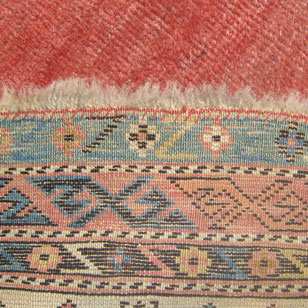
Overcasting with Whip Stitch
